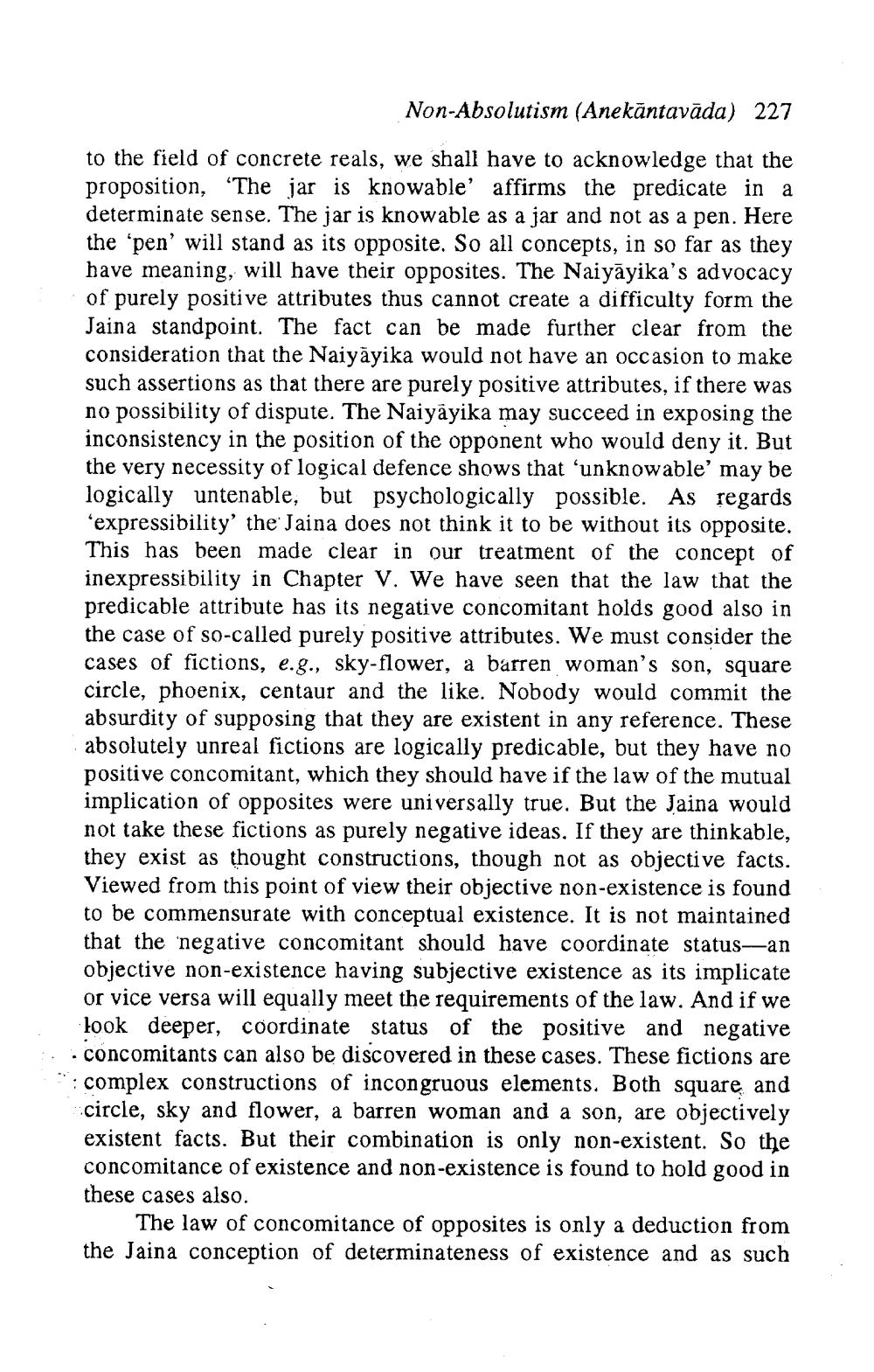________________
Non-Absolutism (Anekāntavāda) 227
to the field of concrete reals, we shall have to acknowledge that the proposition, “The jar is knowable' affirms the predicate in a determinate sense. The jar is knowable as a jar and not as a pen. Here the 'pen' will stand as its opposite. So all concepts, in so far as they have meaning, will have their opposites. The Naiyāyika's advocacy of purely positive attributes thus cannot create a difficulty form the Jaina standpoint. The fact can be made further clear from the consideration that the Naiyāyika would not have an occasion to make such assertions as that there are purely positive attributes, if there was no possibility of dispute. The Naiyayika may succeed in exposing the inconsistency in the position of the opponent who would deny it. But the very necessity of logical defence shows that “unknowable’ may be logically untenable, but psychologically possible. As regards 'expressibility the Jaina does not think it to be without its opposite. This has been made clear in our treatment of the concept of inexpressibility in Chapter V. We have seen that the law that the predicable attribute has its negative concomitant holds good also in the case of so-called purely positive attributes. We must consider the cases of fictions, e.g., sky-flower, a barren woman's son, square circle, phoenix, centaur and the like. Nobody would commit the absurdity of supposing that they are existent in any reference. These absolutely unreal fictions are logically predicable, but they have no positive concomitant, which they should have if the law of the mutual implication of opposites were universally true. But the Jaina would not take these fictions as purely negative ideas. If they are thinkable, they exist as thought constructions, though not as objective facts. Viewed from this point of view their objective non-existence is found to be commensurate with conceptual existence. It is not maintained that the negative concomitant should have coordinate statusan objective non-existence having subjective existence as its implicate or vice versa will equally meet the requirements of the law. And if we
look deeper, coordinate status of the positive and negative ::concomitants can also be discovered in these cases. These fictions are *: complex constructions of incongruous elements. Both square and
circle, sky and flower, a barren woman and a son, are objectively existent facts. But their combination is only non-existent. So the concomitance of existence and non-existence is found to hold good in these cases also.
The law of concomitance of opposites is only a deduction from the Jaina conception of determinateness of existence and as such




